Physicians' Gallery Newsletter
Updates on upcoming events, exhibitions and online stories
Empowering medical excellence, shaping healthcare futures.
In his biography of John Baron, Joseph Pettigrew quotes Baron’s description of his first meeting with Edward Jenner in 1808: ‘he was dressed in a blue coat, nankeen breeches and white stockings’. Pettigrew notes in an appendix that ‘we are grateful to him who told us that Milton wore big buckles... and in some future day the curious reader may be thankful for such particulars descriptive of the habits of Jenner’.
In fact dress was a concern of contemporary medical biographers used to make judgements about the moral character of the subject and therefore his strength as a medical professional. Plainness, modesty, and simplicity were common traits of the ideal doctor and these qualities were emphasised not only in their character and actions but also their dress. The unadorned uniform black suit was the attire that came to symbolise the serious professional man in medical portraits rather than official costume or elaborate finery.
Here we look at the College's illustration collection for examples which highlight the role of dress in the history of medical men.
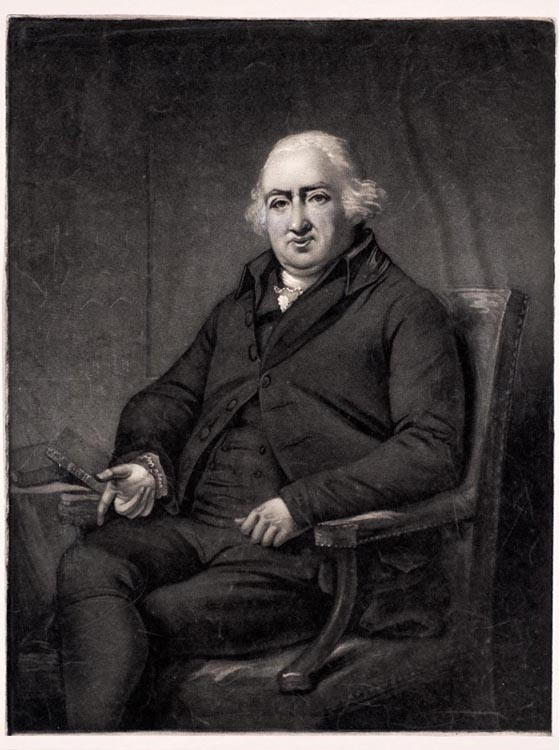
Erasmus Darwin (1731-1802) was a physician and natural philosopher. He studied at the University of Edinburgh, and obtained an MB in 1755 from St John's College, Cambridge. In 1761 Darwin became a fellow of the Royal Society in London. He was a founding member of several provincial medical societies including the Botanical Society at Lichfield, the Lunar Society of Birmingham, and the Derby Philosophical Society. He was also involved in public health matters such as nutrition and ventilation, and in Derby he attempted to institute a dispensary for the poor, however this failed.
This portrait of Darwin depicts him in an unadorned plain black suit with a white shirt and cravat that increasingly became uniform throughout the eighteenth and nineteenth centuries and came to stand for the serious professional man.
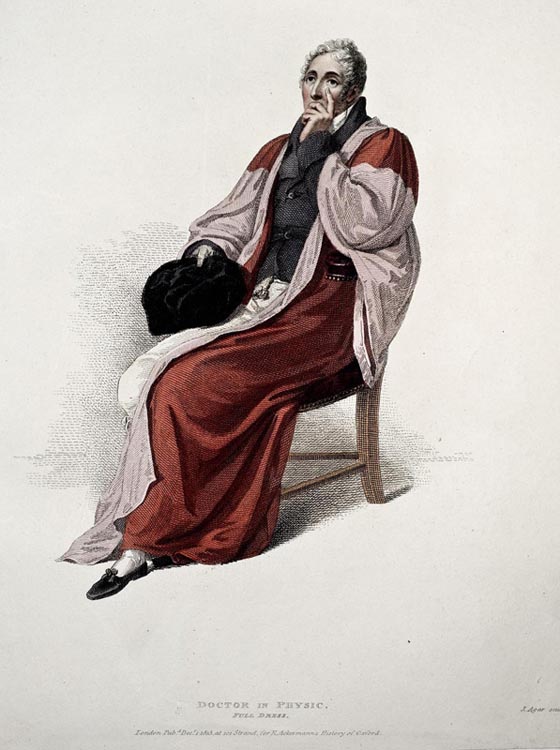
Christopher Pegge (1765-1822) was a physician born in London. He studied at Christ Church, Oxford. He earned his BM and MA as a fellow of Oriel College, Oxford in 1789. He practised and taught medicine in Oxford earning the post of Lee's Reader in anatomy at Christ Church and being elected a physician to the Radcliffe Infirmary in the same year, 1790. In 1795 he became a fellow of the Royal Society and a year later of the Royal College of Physicians. He delivered the college's Harveian oration in both 1805 and 1817. In 1801 he was appointed Regius Professor of physic.
According to P. W. J. Bartrip, his propensity to wear the traditional costume of this post, cocked hat, wig, and gold-headed cane, was noted as an unusual characteristic that was rejected by his successor.
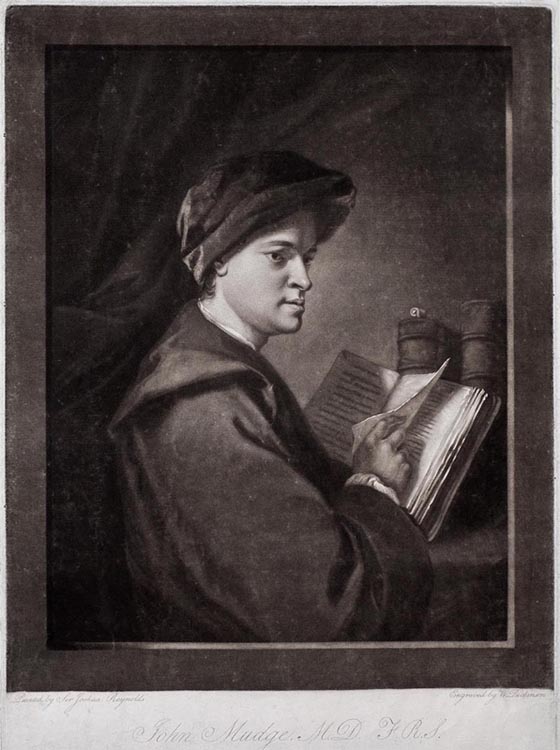
John Mudge (1721-1793) was a surgeon and physician born in Devon. He was well connected and renowned amongst his contemporaries, with acquaintances includingSamuel Johnson, James Boswell and Joshua Reynolds. His success was aided by family connections as well as by talent. Mudge became a Fellow of the RoyalSociety in 1777.
Many of the portraits depict the sitter wearing a gown and turban, the combination implying their situation in the domestic sphere. Brandon Brame Fortune argues that the banyan and turban in this context indicated both the wealthy and leisured social position of the sitter and his studious and creative life. The appeal of these robes for professional men was the loose fitting nature of the garment that implied an intellectual freedom through lack of sartorial restraint; additionally the turban was worn in the domestic sphere as a warm and comfortable replacement for a wig. Therefore the choice for medical practitioners to be depicted in this state of undress can be seen in the context of their desire to appear studious.
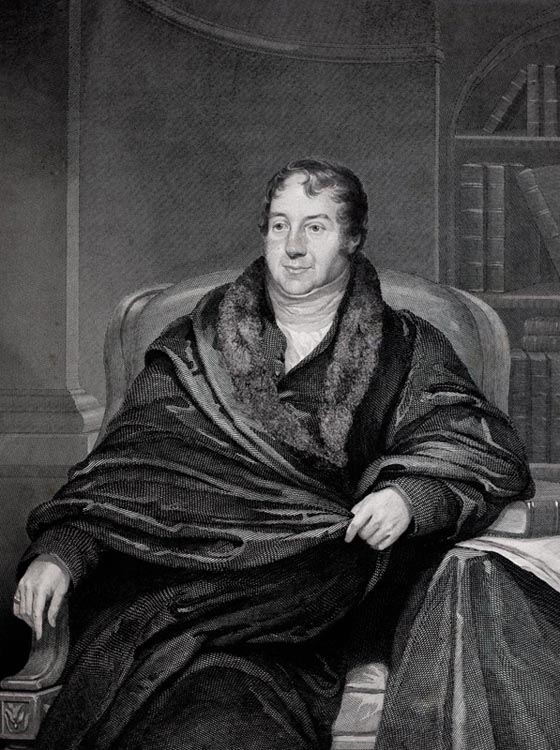
Edward Jenner (1749-1823), surgeon and pioneer of smallpox vaccination, was born in Gloucestershire. He trained at St George's Hospital, London, as a student of John Hunter. He received his MD in 1792 from the University of St Andrews. He made his first vaccination in 1796, publishing his findings in 1798, however it took a decade for the government to accept his theory. Despite this, the National Vaccine Establishment was founded in 1808 and by 1853 vaccination had become compulsory in Britain. Jenner became a fellow of the Royal College of Physicians of Edinburgh.
Jenner’s dress in this portrait is draped in a way reminiscent of the toga. For the Romans the toga was worn by the ruling classes as a form of public dress symbolising power, nationality, and masculinity. The toga was impractical to wear and the act of wearing it was considered a skill, which required training and assistance from servants. The toga was therefore a symbolic form of public dress rather than a practical outfit and was alluded to in many portraits of the long eighteenth Century.
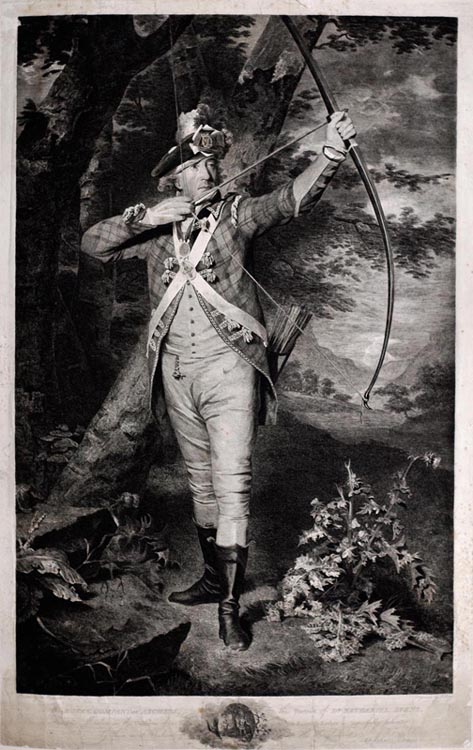
Nathaniel Spens (1728 - 1815) was a Scottish physician and archer born in Fife. He studied medicine at the University of St Andrews before moving to Edinburgh to practise. He joined the incorporation of Surgeons in 1751, and in 1794 he became the president of the RCPE. He was a member of the Royal Company of Archers and the portrait of this print by Raeburn famously hangs in ArchersHalls.
According to Frank Adam and Thomas Innes the Royal Company of Archers was the first military body in the service of the British Crown to adopt tartan in their uniform.
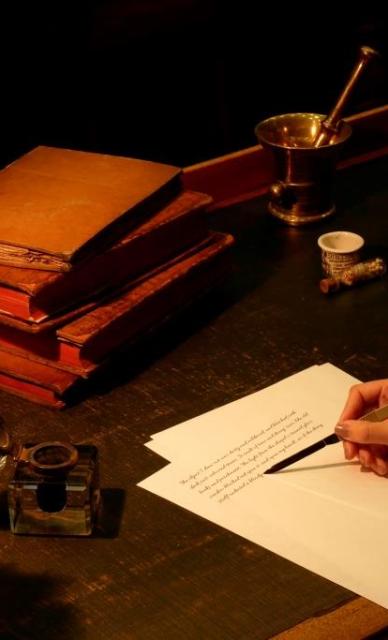
Updates on upcoming events, exhibitions and online stories